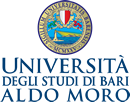Aspetti di biologia e morfologia del Curculio (Balaninus) propinquus (Desbrochers) (Coleoptera: Curculionidae)
DOI:
https://doi.org/10.15162/0425-1016/712Abstract
BIOLOGICAL AND MORPHOLOGICAL ASPECTS OF CURCULIO (BALANINUS) PROPINQUUS (DESBROCHERS) (COLEOPTERA: CURCULIONIDAE)
At the present there is any information on the biology and morphology of Curculio propinquus (Desbrochers) and incomplete data on the host plants. Observations on this weevil were carried out on different species of Quercus present in Apulia Region (Southern Italy). Adults and larvae of C. propinquus feed on the acorns but the most harmful ones are the larvae which can destroy up to 100% of fruits of some Oak plants. In the woods of Q. trojana and Q. pubescens, the first species is the most damaged and between Q. frainetto and Q. cerris, the acorns of the first one are the most attached. In laboratory they also develop in chestnuts of Castanea sativa Miller.
The natural enemis are rare and, so far, only two have been found: Scambus calobatus (Gravenhorst) (Hymenoptera: Ichneumonidae) and the fungus Metarhizium anisopliae Metch. (Deuteromycotina: Hyphomycetes). Formica fusca L. (Hymenoptera: Formicidae) is an active pre- dator of the last instar of the B. propinquus larvae.
Key words: male genitalia, last instar larva morphology, biology, ethology.







